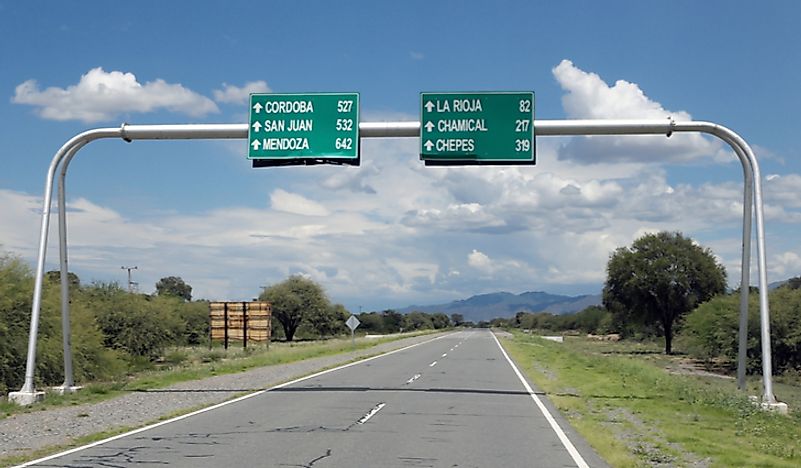Provinces of Argentina

Argentina is a federal republic divided into 24 administrative regions, which include 23 provinces and one autonomous city. These provinces have their own governments, which are autonomous from the federal government, and further subdivided into departments and municipalities. Provinces have provincial laws and constitutions, but are required to follow the framework of the federal constitution. Provinces are also free to define their local governments and legal structures.
Provinces of Argentina
Buenos Aires
Buenos Aires is an autonomous city and is the capital of Argentina, as well as the country's most populous city. The city occupies an area of 118,754 square miles and has an estimated population of more than 17 million people of diverse cultural, ethnic, and religious origins.
Cordoba
Cordoba is located in the central region of Argentina. The province covers an area of 63,831 square miles and is home to a population of more than 3.6 million people. The province is the fifth largest and the third most populous metropolitan area in the country. Cordoba’s economy relies heavily on agriculture and industries, and has the second largest economy among all of Argentina’s provinces. Cordoba is divided into 26 administrative departments. The province experiences a predominantly temperate climate characterized by hot and humid summers and extremely dry winters.
Santa Fe
Santa Fe is a province located in the central region of Argentina which occupies an area of 51,354 square miles and has a population of 3,481,514. Santa Fe is Argentina’s fourth most important economy and is the country's primary producer of soybeans. Agriculture is the province’s most important economic activity and the province boasts 21% of Argentina’s cultivated land. However, other sectors such as manufacturing, transport, and the service sector are also well developed. The province is subdivided into 19 departments.
Ciudad de Buenos Aires
Ciudad de Buenos Aires has a population of 3,068,043 and occupies an area of 78 square miles. It is one of Latin America’s most diverse cities due to the cultural, religious and ethnic diversity of its population. Ciudad de Buenos Aires has 48 administrative divisions, called Barrios or neighborhoods, and 15 communes. The economy in Ciudad Buenos Aires is one of the most developed in Argentina.
Mendoza
Mendoza is located in the Cuyo region of Western Argentina. Mendoza covers an area of 57,462 square miles and has a population of about 1.9 million people. The province experiences a continental climate with warm summers and cold winters. Mendoza’s economy is the fifth largest in the country and is a top viticulture center in the world. The economic pillars of the province include agriculture, tourism, and mining. Mendoza has 18 administrative departments. Owing to its background as a wine producing province, Mendoza attracts local and international enotourists who come to sample the Argentine wine in various restaurants, thus contributing to the province’s economy.
Provinces of Argentina
The provinces in Argentina fall under the country's seven major geographical regions: Northwest, Mesopotamia, Gran Chaco, Sierras Pampeanas, Cuyo, Pampas, and Patagonia. Some provinces span more than one of these regions. These regions have distinct climates and topography which affect the economic, social, and cultural activities of the provinces.
Provinces of Argentina
| Rank | Province | Population |
|---|---|---|
| 1 | Buenos Aires | 17,196,396 |
| 2 | Cordoba | 3,683,937 |
| 3 | Santa Fe | 3,481,514 |
| 4 | Ciudad de Buenos Aires | 3,068,043 |
| 5 | Mendoza | 1,949,293 |
| 6 | Tucuman | 1,654,388 |
| 7 | Salta | 1,388,532 |
| 8 | Entre Rios | 1,360,443 |
| 9 | Misiones | 1,233,177 |
| 10 | Chaco | 1,180,477 |
| 11 | Corrientes | 1,101,084 |
| 12 | Santiago del Estero | 958,251 |
| 13 | San Juan | 764,464 |
| 14 | Jujuy | 753,891 |
| 15 | Rio Negro | 728,403 |
| 16 | Neuquen | 646,784 |
| 17 | Chubut | 598,380 |
| 18 | Formosa | 595,129 |
| 19 | San Luis | 495,629 |
| 20 | Catamarca | 408,152 |
| 21 | La Rioja | 383,220 |
| 22 | La Pampa | 352,378 |
| 23 | Santa Cruz | 347,593 |
| 24 | Terra del Guego | 164,944 |











